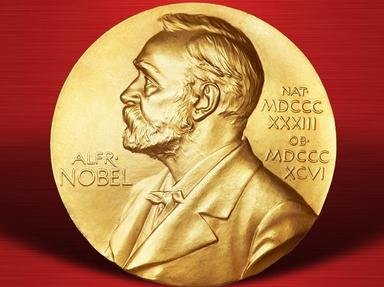
Mixed Nobel Prize Winners Trivia Quiz
On his will, Alfred Nobel established an annual prize that is to be awarded to "those who, during the preceding year, have conferred the greatest benefit to humankind." See if you can identify each recipient with the corresponding category.
A classification quiz
by Gispepfu.
Estimated time: 3 mins.